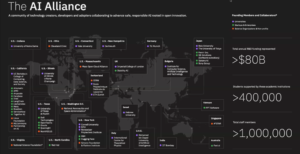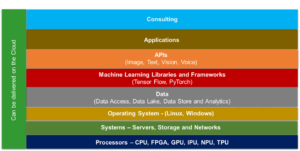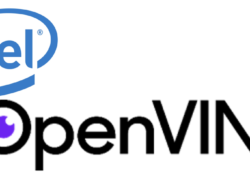Srini Chari, Ph. D., MBA | M.R. Pamidi, Ph. D.
It has been just over a year since OpenAI’s ChatGPT made a dramatic entry, disrupting the AI landscape. On December 5, 2023, IBM and Meta announced an industry-wide alliance, partnering with many hardware, processors, software, and services providers to accelerate open innovation in AI. Alliance members include AMD, Dell, Intel, RedHat, ServiceNow, and many others, including top research institutions such as the University of California, Berkeley, and other academic institutions (Figure 1).

Figure 1: The IBM AI Alliance
The broadly stated objectives of this IBM-led alliance include the creation of common frameworks for evaluating AI algorithms, investing capital in AI research funds, ensuring safety, security, and equity, and collaboration on open-source models.
Another (not-stated) purpose of this Alliance could be to attempt to challenge the perceived dominance of OpenAI, Microsoft, Google, Nvidia, and Amazon, all of whom have proprietary approaches to AI solutions. Ironically, despite its name, even OpenAI’s omnipresent ChatGPT system is closed.
This IBM-led alliance includes several prominent companies in the IT industry, and many aspire to be perceived as top players in the rapidly growing AI and Generative AI (GenAI) market. This Alliance could allow these technology companies to increase their leadership position in their respective category. The big question is whether some current leaders will join this Alliance. And what is there for them? And will companies that are part of this Alliance experience value accrual?
Analysis and Point-of-View
Deploying AI and GenAI requires a collective effort across the technology ecosystem. No one vendor offers a complete, robust, and scalable technology stack—hardware, middleware, software, services—but the secret sauce is to partner with the right vendors to fill the gaps.
To analyze this AI ecosystem, Cabot Partners (“Cabot”) created an AI Blueprint in 2017 (Figure 2) and has been working on and improving this Blueprint since then.
This AI Blueprint assesses key ecosystem participants with in-depth analysis for every major component of each layer in the Blueprint: consulting, applications, APIs, software frameworks, algorithms, libraries, development tools, data infrastructure, operating systems, systems, storage, networks, and processors. The cloud is expected to be a significant delivery vehicle for AI. So, cloud providers are a critical part of this Blueprint.

Figure 2: Artificial Intelligence Blueprint by Technology Category
Cabot analysts and AI technical experts also identified key companies in each category (Figure 3), with the leader in each category listed at the top and the other firms in that category in descending order. The public companies in this Alliance (RedHat is part of IBM) are highlighted in a golden box.

Figure 3: AI Companies Organized by Technology Category (Higher Position is Better)
Then, our team scored each solution provider that’s public by category. Our criteria for evaluating each vendor considered both technology and market factors. Broadly, they include:
- Technology for AI and High-Performance Computing (HPC): AI and HPC are tied in many ways, as they both involve processing large amounts of data and performing complex computations. AI can benefit from HPC’s parallel processing, scalability, and speed, while HPC can benefit from AI’s automation, intelligence, and optimization. AI development goes hand in hand with HPC advances. HPC can better support AI model training than traditional systems can. For instance, HPC clusters can run deep neural networks with millions of parameters and handle massive multi-dimensional data sets. AI can also help enhance the security and reliability of HPC systems by detecting and preventing cyberattacks.
From an HPC viewpoint, HPE is the leader in the systems category, especially since its Cray and Silicon Graphics acquisitions. Likewise, from a CPU perspective, AMD is the leader based on performance and current momentum, and Nvidia is the undisputed leader in graphics processing units (GPUs). Amazon, Microsoft, and Google have significant HPC capabilities being leveraged for AI.
- Market Leadership: This includes the position of the company or product with the highest sales or market share in a given industry or market. Market leaders can also be the first to introduce new products or services (i.e., OpenAI), set the standards for quality and innovation, and influence the direction and trends of the market. Market leaders enjoy many advantages, such as brand loyalty, economies of scale, pricing power, and profitability.
If a company, e.g., IBM, Microsoft, or Google, has offerings in several categories, we took the average score across these classes. Figure 4 depicts this score for the public companies mentioned earlier.

Figure 4: Average Leadership Score for Public Companies
Next, we looked at a vendor’s year-over-over stock performance (Figure 5) on December 4, 2023. This is one measure of a company’s recent value accrual.

Figure 5: 52-Week Percentage Change in Stock Price
Interestingly, there is some correlation between a company’s leadership score and its recent 52-week. For instance, NVIDIA and Meta have high leadership scores and large value accrual. A company’s stock growth is a function of many variables. However, AI leadership could contribute significantly to a company’s value. The big question is, “Will this Alliance drive future value for its members”? And will this Alliance grow and thrive? It is too early to tell.
Some Concluding Thoughts
While this Alliance includes many academic/research institutions and prominent IT companies, it does not include several current AI leaders, such as Nvidia, Microsoft, Google, HPE, and Amazon. It is unclear if these AI leaders have significant incentives to be part of this Alliance. They are already creating their strategic partnerships. For example, Nvidia CEO Jensen Huang recently shared the stage with the CEOs of Amazon, Google Cloud, and Microsoft at their respective annual events to announce strategic AI initiatives.
Sustaining and growing alliances, especially large ones, are hard. Often, they require small, careful, deliberate steps. Many partnerships fail for various reasons: poor communication, a lack of common goals and shared values, profit-driven motives, a lack of motivation and drive to succeed, different risk appetites, and an inability to depend on each other as partners. The IT industry is rife with failed alliances.
However, when alliances succeed (and there are many in the IT industry), they could be a significant value multiplier for the companies that participate. We wish this Alliance great success. In its Research divisions and Consulting group, IBM has extraordinary AI capabilities to make this Alliance work and help clients in their AI journey even when clients use technologies from companies not part of this Alliance.
For example, as a small step, IBM Consulting could partner with Nvidia to help enterprises deploy and scale GenAI. Companies such as Deloitte, HPE, Lenovo, and others are already doing this. This could help attract Nvidia to this Alliance. When leaders partner with leaders, the customer wins!









